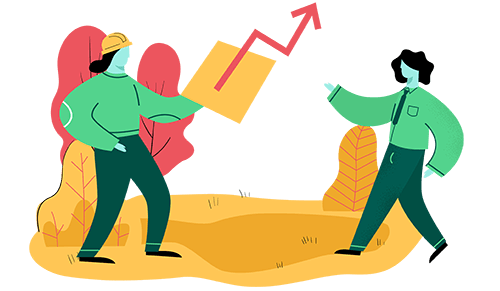Definitions
Devised through a review of established definitions in Canada. Many were adapted from those provided by Yardstick, a park benchmarking service offered worldwide and within Canada. Park People offers its deepest thanks for their assistance.
Total hectares of parkland and green space that is publicly accessible and owned, leased, or under a management agreement by the municipality. This number should capture all parks and green spaces that are perceived/used by residents similarly to parkland.
Specifically, it should include:
- Actively managed parkland
- Natural parkland/areas
- Other municipally owned, managed, or leased open spaces that are used as public green space
Excludes:
- Golf courses
- School yards, if owned/maintained by the municipality
- Active (open) cemeteries
- Sports stadia
- Parking lots
- Institutional and other publicly owned green space
- Other parks/green spaces that are not owned, managed or leased by the municipality (e.g. privately owned public spaces)
A natural area is a green space which receives a relatively low level of maintenance and supports natural or naturalizing vegetation. Natural areas may be publicly accessible (e.g. via trail networks) or areas with limited/little public access.
Natural areas may include:
- trails or walkways
- washrooms
- environmentally sensitive/protected areas
- stormwater ponds/water bodies located within natural areas
Excludes:
- parking lots
- actively managed parkland
Total hectares of parkland that is actively maintained by the municipality for community use. These parks often contain built and natural amenities such as: park furniture, planted trees/beds, sports fields, playgrounds, and mown grass.
Includes:
- plazas and “grey” spaces used for public recreation, when maintained by the parks department
- small ponds/water bodies located within actively managed park spaces
Excludes:
- natural areas
- hazard lands
- school yards
- active (open) cemeteries
- golf courses
- sports stadia
- parking lots
Total hectares of parks and publicly accessible green spaces that are owned and maintained as parkland by public entities other than the municipality, such as:
- The federal government
- The province
- A regional government
- Conservation authorities
- Universities
Excludes:
- School board lands
- Privately owned public spaces
A playground refers to an area with purpose-built children’s playground equipment present, and may have just one single item of equipment or several items located together.
Total number of permanent public washrooms in parks that are open year-round or seasonally. Excludes portable toilets.
Total population of the municipality based on 2021 Canadian census.
Direct operating expenditures (not including revenues) for 2021 for maintaining parks and natural areas. This number will be used with your current year population to understand operating budget spent per person.
Includes:
- planting and maintenance of trees in park/natural areas
- graffiti & vandalism repair
- management, administration & operational staff salaries
- consultant/contractor costs
- parks horticultural plantings
- maintenance of closed cemeteries if carried out from the parks operating budget
- parks litter pickup & waste disposal
- inspection and maintenance of splash pads, playgrounds & outdoor fitness equipment
- maintenance & replacement of park furniture
- public toilets where maintained from parks budget
- sports field maintenance
- snow clearing and ice control for parks & natural areas
- any other parks/green space maintenance costs except cemetery costs where the cemetery is "active"
Excludes: golf courses, swimming pools, indoor recreation facilities/halls, forestry, and zoos.
Capital expenditure for all capital items related to land improvement works completed during the 2021 financial year. It includes:
- Both new and renewal work
- Capital items carried forward from previous years
- Salaries and wages for all staff involved in the design, planning and delivery of capital projects.
Total amount donated to the city through philanthropic sources or corporate sponsorship in 2021 to fund park-based projects. Excludes:
- general revenue generated by the city (e.g. through user fees, park bench dedication programs, etc.)
- provincial/federal government grants
Community gardens/urban farms are food-growing gardens available for the public to use that may require membership. This includes community orchards.
Includes both standalone dog parks and off-leash dog areas within parks.
Includes only volunteers who have worked directly with the municipality (not external organizations). Programming refers to publicly accessible activities and events (e.g., yoga classes, nature walks, park cleanups, farmer's markets, festivals, celebrations, etc.). Programming does not include any large commercial activities, such as a private party.
A formal municipal program through which residents can get involved in parks. An example would be an adopt-a-park program. The roles of these groups may include environmental stewardship (e.g., clean-ups), social/recreational programming (e.g., festivals, yoga in the park), etc. Does not include one-off volunteer opportunities (e.g., volunteering at a specific event).
A monetary grant offered by the municipality that residents and community groups can apply for, and can be used for the purposes of improving or programming parks.
An overall plan or strategy dealing with the municipality’s current and future park/green space provision needs. It usually includes an analysis of current provision against population and a review of future park/green space acquisition/disposal needs.
The design of parks or park amenities to be usable by all people, to the greatest extent possible, without the need for adaptation or specialized modification. This would include people of all ages, and those with and without disabilities.
Participatory budgeting is a process in which governments invite local residents to propose ideas on community improvements or funding priorities and vote on how a portion of a government's budget will be allocated to fund those ideas. Winning projects are then built by the city.

